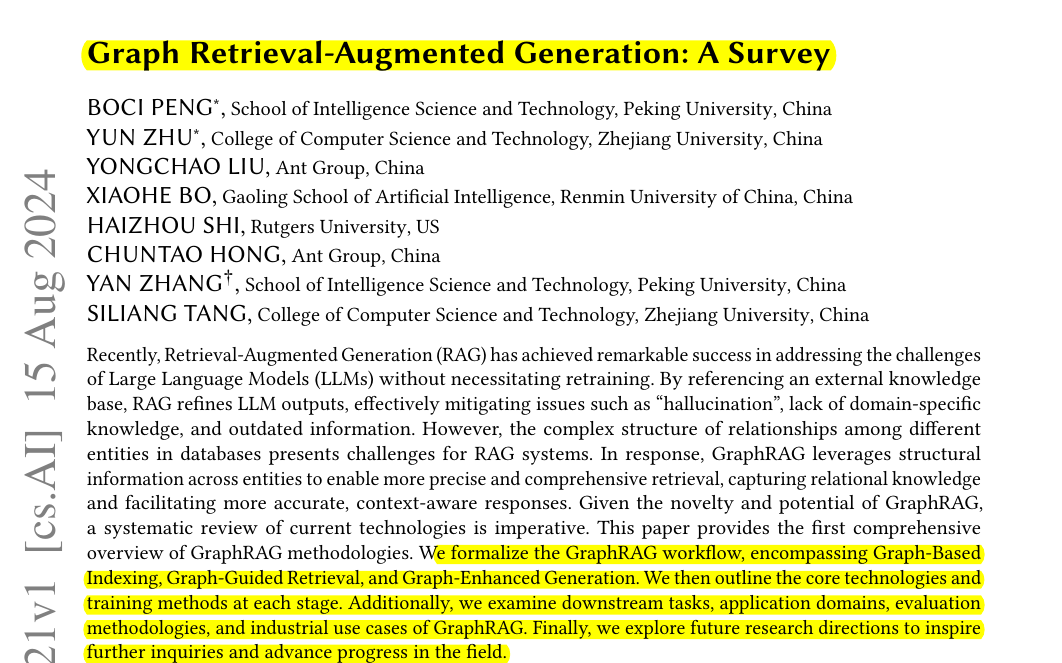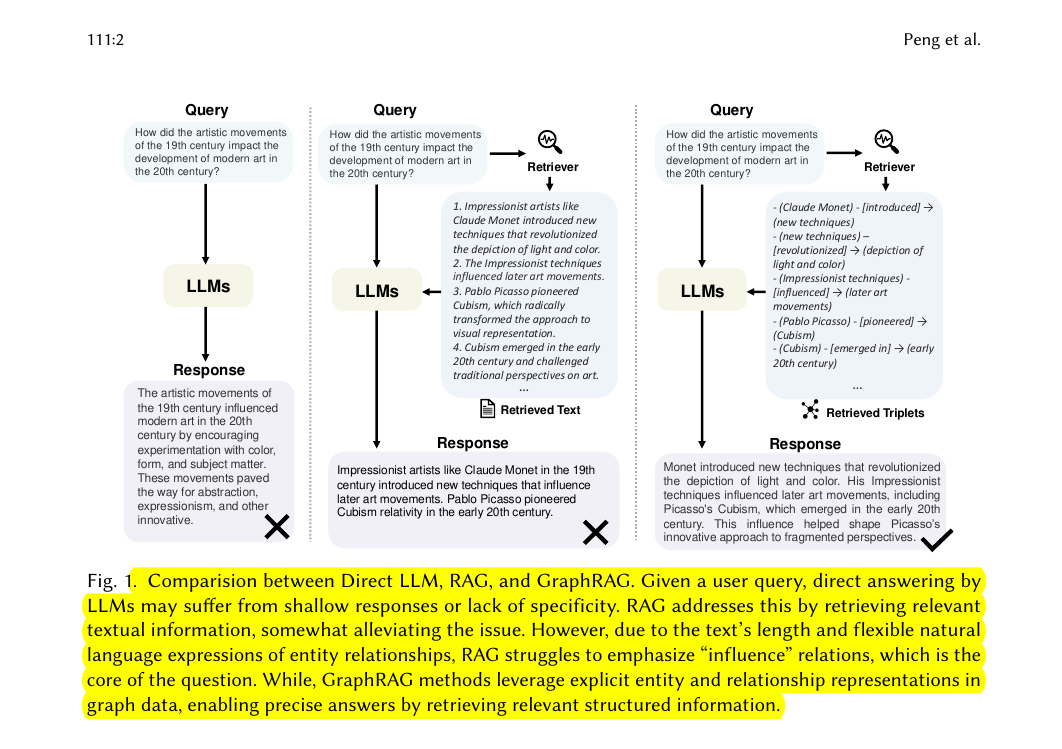Graph Retrieval-Augmented Generation: A Survey
Nice GraphRAG Survey paper - explores GraphRAG techniques, bridging graph-structured data and language models.
Nice GraphRAG Survey paper - explores GraphRAG techniques, bridging graph-structured data and language models.
Original Problem 🔍:
Traditional Retrieval-Augmented Generation (RAG) systems struggle to capture complex relational knowledge and often provide redundant or incomplete information, limiting their effectiveness in tasks requiring comprehensive understanding of interconnected data.
Key Insights from this Paper 💡:
• Graph-based retrieval captures relational knowledge more effectively than text-based methods
• Abstracting textual data into graph structures reduces input length and mitigates the "lost in the middle" problem
• Retrieving subgraphs or communities provides more comprehensive context for complex tasks
Solution in this Paper 🛠️:
• Proposes GraphRAG framework with three main stages:
Graph-Based Indexing: Constructs and indexes graph databases
Graph-Guided Retrieval: Extracts relevant graph elements (nodes, triples, paths, subgraphs)
Graph-Enhanced Generation: Integrates retrieved graph data with language models
• Develops techniques for efficient graph indexing, retrieval, and integration with LLMs
• Explores various graph formats and encoding methods for LLM compatibility
Overview of the GraphRAG framework for question answering task
Proposes GraphRAG framework with three main stages:
Graph-Based Indexing: Constructs and indexes graph databases
Graph-Guided Retrieval: Extracts relevant graph elements (nodes, triples, paths, subgraphs)
Graph-Enhanced Generation: Integrates retrieved graph data with language models




